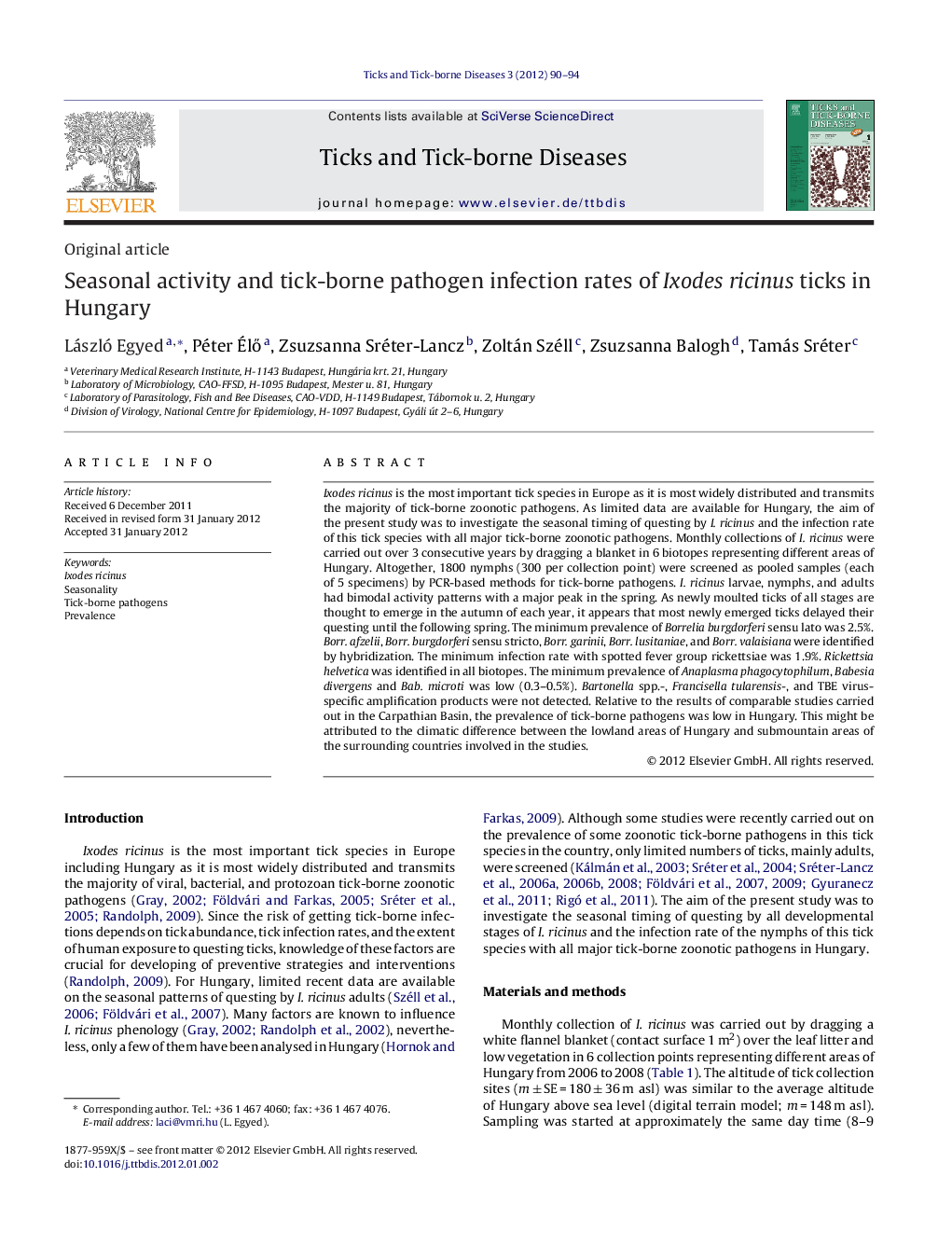| کد مقاله | کد نشریه | سال انتشار | مقاله انگلیسی | نسخه تمام متن |
|---|---|---|---|---|
| 2474271 | 1113129 | 2012 | 5 صفحه PDF | دانلود رایگان |

Ixodes ricinus is the most important tick species in Europe as it is most widely distributed and transmits the majority of tick-borne zoonotic pathogens. As limited data are available for Hungary, the aim of the present study was to investigate the seasonal timing of questing by I. ricinus and the infection rate of this tick species with all major tick-borne zoonotic pathogens. Monthly collections of I. ricinus were carried out over 3 consecutive years by dragging a blanket in 6 biotopes representing different areas of Hungary. Altogether, 1800 nymphs (300 per collection point) were screened as pooled samples (each of 5 specimens) by PCR-based methods for tick-borne pathogens. I. ricinus larvae, nymphs, and adults had bimodal activity patterns with a major peak in the spring. As newly moulted ticks of all stages are thought to emerge in the autumn of each year, it appears that most newly emerged ticks delayed their questing until the following spring. The minimum prevalence of Borrelia burgdorferi sensu lato was 2.5%. Borr. afzelii, Borr. burgdorferi sensu stricto, Borr. garinii, Borr. lusitaniae, and Borr. valaisiana were identified by hybridization. The minimum infection rate with spotted fever group rickettsiae was 1.9%. Rickettsia helvetica was identified in all biotopes. The minimum prevalence of Anaplasma phagocytophilum, Babesia divergens and Bab. microti was low (0.3–0.5%). Bartonella spp.-, Francisella tularensis-, and TBE virus-specific amplification products were not detected. Relative to the results of comparable studies carried out in the Carpathian Basin, the prevalence of tick-borne pathogens was low in Hungary. This might be attributed to the climatic difference between the lowland areas of Hungary and submountain areas of the surrounding countries involved in the studies.
Journal: Ticks and Tick-borne Diseases - Volume 3, Issue 2, April 2012, Pages 90–94